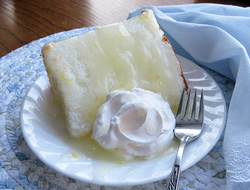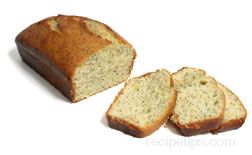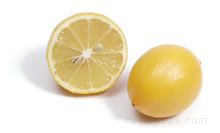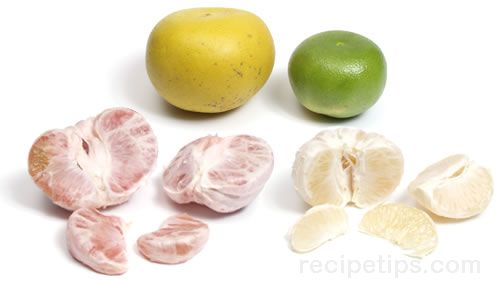High in vitamin C, lemons are used often in European cooking, adding a mild tart flavor to a variety of food dishes or preserved in salt to be stored and cooked in many Moroccan dishes. Universally, Lemon juice is added to beverages such as lemonade, liqueurs, and tea, as well as a flavoring ice cream, sorbets, salad dressings, sauces, and marinades. It is used as a garnish, in the form of a slice or wedge added to the plate to be squeezed for use for use in enhancing the flavors of seafood salads and many different fish dishes as well as numerous fried food dishes. Lemon juice is a common ingredient for souring various foods such as adding several teaspoons to fresh cream in order to sour it, or by adding several drops to the water when poaching eggs, in order to coagulate the egg whites.
When squeezing a lemon for juice, warm the lemon first by allowing it to reach room temperature, either by placing on a counter for an hour or by rolling it gently between two hands. It can also be heated in a microwave for a very short time to bring it up to room temperature. This procedure of warming makes the lemon softer so it easier for extracting the juice. Several methods can be employed for removing the juice, which include a lemon reamer, a lemon juicer or a juice extractor, also known as a citrus trumpet. The reamer and the extractor seem to work the best while the lemon juicer is most often best suited for larger fruits, such as oranges.
Lemon zest (the yellow part of the peel) is commonly used to add flavor when cooking and baking by using the oils in the skin as a means of improving many food flavors. Strips of lemon zest can be made by using a paring knife, a vegetable peeler or a citrus zester to slice off thin pieces of the yellow peel. A citrus zester removes the zest in fine threads, which can be minced as an alternative to grating. When slicing off the pieces, care should be taken to not remove any of the bitter white pith. To grate the lemon zest, rub the lemon against a metal grater, making sure to turn the fruit so that you are taking off the yellow part of the peel and not the white pith. Lemon zests are often used in sweets, such as cookies, cakes, tarts, pies, and custards, in baked dishes, and in flavored butters and sauces. Candied zest is prepared for serving on pies, desserts, and as a flavoring in teas and coffee beverages.
The acidic characteristics of lemons also serve in many non-food functions when used as a bleaching or cleaning agent as well as a cosmetic to lighten hair colors. Versatile in use, lemons provide a pleasing aroma and a fresh tasting flavor for a variety of purposes.

















